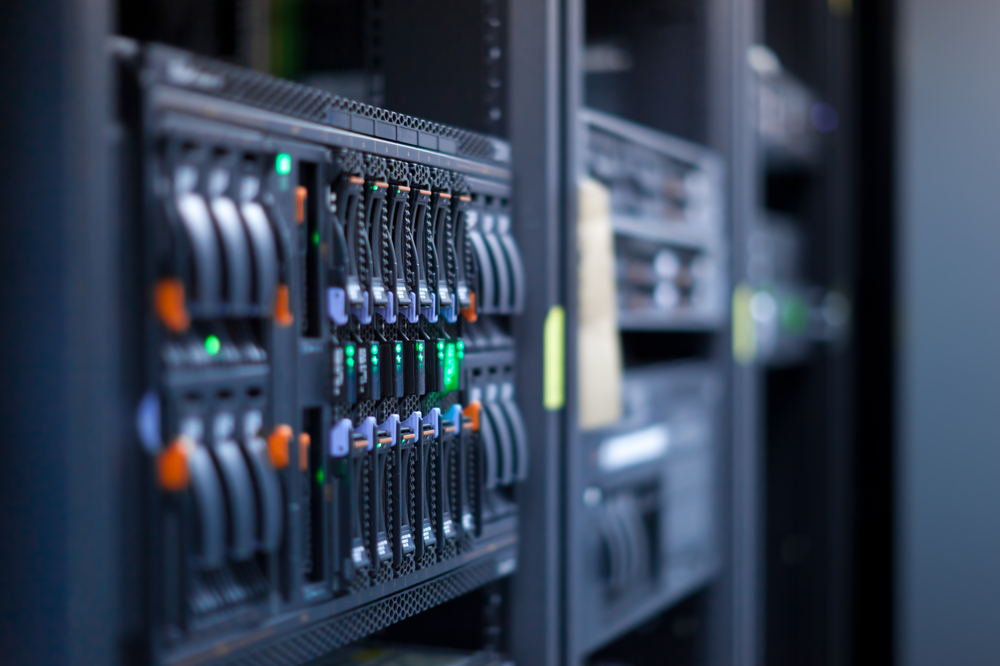
A few weeks ago was a lot of excitement within the industry as the United States and Intel announced the construction of the world’s most powerful computer to date.
Named Aurora, the ‘beast’ will peak performance at 180 petaFLOPS and will be housed at Argonne National Laboratory, just outside Chicago. Although, it will not be commissioned until 2018.
Also in the US and also involving Intel, was the ban by the Department of Commerce on the chipmaker to export thousands of chips to update the Chinese Tianhe-2 supercomputer, fearing nuclear research could be done using the device.
But with the race on to build the world’s most powerful computer, who are the big players?
Americans hold the title for most supercomputer vendors, but sellers come from around the world.
Have a look at the top ten companies that are supplying the super machines of today.
1. IBM
Cores: 7,346,514
Machines: 153
IBM has deployed their solutions in most high performance machines worldwide.
The IBM Power solutions give supercomputers ultra scale performance and saves on floor-space, power and cooling expenses.
The main two solutions from IBM include IBM Blue Gene and IBM Power 775 supercomputer.
In November last year, IBM’s first place in the rank granted the company a $325 million deal to build two supercomputers together with Nvidia for the US Department of Energy.
2. HP
Cores: 3,747,812
Machines: 179
In 2013, HP became the leader of the high-performance computing (HPC) – evaluated at $10.3 billion that year – with 35% share of the HPC server market.
Hewlett-Packard offers a set of packages within different products and services with a portfolio boosting HPC Cluster solutions, servers, storage, data centre infrastructure, services and support.
3. Cray
Cores: 3,583,180
Machines: 62
Cray presents itself as the supercomputer company. Founded in 1987 the enterprise features a series of products specifically designed for super machines.
Divided over three key areas – computing, analytics and storage – the company helps scientific and engineering organisations of all types to solve complex computing and analytics challenges.
4. NUDT
Cores: 3,547,648
Machines: 5
The National University of Defence Technology (NUDT) gives China the title of owner of the world’s most powerful computer, the Tianhe-2.
The university owns six supercomputers with Yinhe-I being the first opened in 1983.
The NUDT covers an area of 373 hectares in the urban area of Changsha, capital city of Hunan Province in South-Central China.
Supercomputer Tianhe-2 has a performance capability of 33.86 petaflops, equivalent to quadrillions of calculations per second.
5. Fujitsu
Cores: 915,974
Machines: 8
Fujitsu has been building supercomputers for over 30 years.
"We believe that supercomputing has the potential to solve the world’s most pressing dilemmas," the company said.
In November 2011, the K computer broke the 10 petaflops speed barrier, winning the number one spot in the TOP500 world supercomputer rankings for the second time.
6. SGI
Cores: 813,376
Machines: 23
Created in the early 1980s, Silicon Graphics International, only took on board high performance computers development seriously in 2009.
In the space of six years, the company has provided solutions to several customers around the world via ICE and UV systems.
As for coherent shared memory, the scale up UV’s system gives in-memory to supercomputers.
ICE, is a scale out system for memory distribution.
7. Dell
Cores: 618,396
Machines: 9
With nine machines deployed around the world, Dell has on the market several options for supercomputer buyers.
The Dell PowerEdge Servers and Dell Precision Workstations come in different form factors and can be configured to meet density, flexibility and performance needs.
Other solutions include Dell High-Performance Storage and Dell Genomic Data Analysis Platform.
After the cluster has been deployed, the company offers Remote HPC Cluster Management to allow customers to monitor and manage their HPC solution.
8. Bull
Cores: 588,120
Machines: 18
Bull designed four different family of servers – bullx – to provide flexibility in terms of interconnect, power, and cooling, and cover a wide spectrum of applications.
bullx B700 Direct Liquid Cooling blade system reduces energy consumption by a third with warm water cooling.
The bullx B500 blade system ultra-concentrates power for clusters of all sizes and bullx R400 is a rack-mounted servers were optimised for extreme computing, from ultra-compact compute nodes to enhanced service nodes.
The last pack available is the bullx S6000 supernode, which includes SMP systems to meet memory needs.
The company said: "Though the majority of supercomputers are clusters based on industry-standard components, there is no one-size-fits-all solution in extreme computing."
9. PEZY/Exascaler
Cores: 262,784
Machines: 1
Japanesa PEZY and Canadian Exascaler collaborated to create a supercomputer with an Rpeak of 395,264 Gflops
Exascaler offers HPC services and engineering solutions in different markets including mining, oil & gas, nuclear, government and aerospace.
PEZY was founded in 2010 to develop and sell microprocessors, electric devices, systems, and software. Its products include PEZY-1 processors, PEZY-1 Quad PCI boards, PEZY-supercomputing (SC) processors, and PEZY-SC Quad PCI boards.
10. Hitachi/Fujitsu
Cores: 222,072
Machines: 1
Hitachi and Fujitsu have together built a high performance computer with an Rpeak of 1,502,236 Gflops.
Fujitsu said: "The importance of HPC is rapidly growing because more and more scientific and technical problems are being studied on the basis of computer simulations."
Hitachi offers FORTRAN Compiler, which can perform three-level optimisation to maximise the characteristics of the architecture (PA or Power).
The company also develop MSL2, MATRIX/W, and SkylineSolver to be used in various kinds of scientific calculation.
As for Fujitsu, the company has developed an HPC Cluster Suite, a comprehensive software stack for x86 HPC clusters operated on Red Hat and CentOS.
The provider’s portfolio also includes the PRIMERGY family of servers to keep the supercomputing running.






